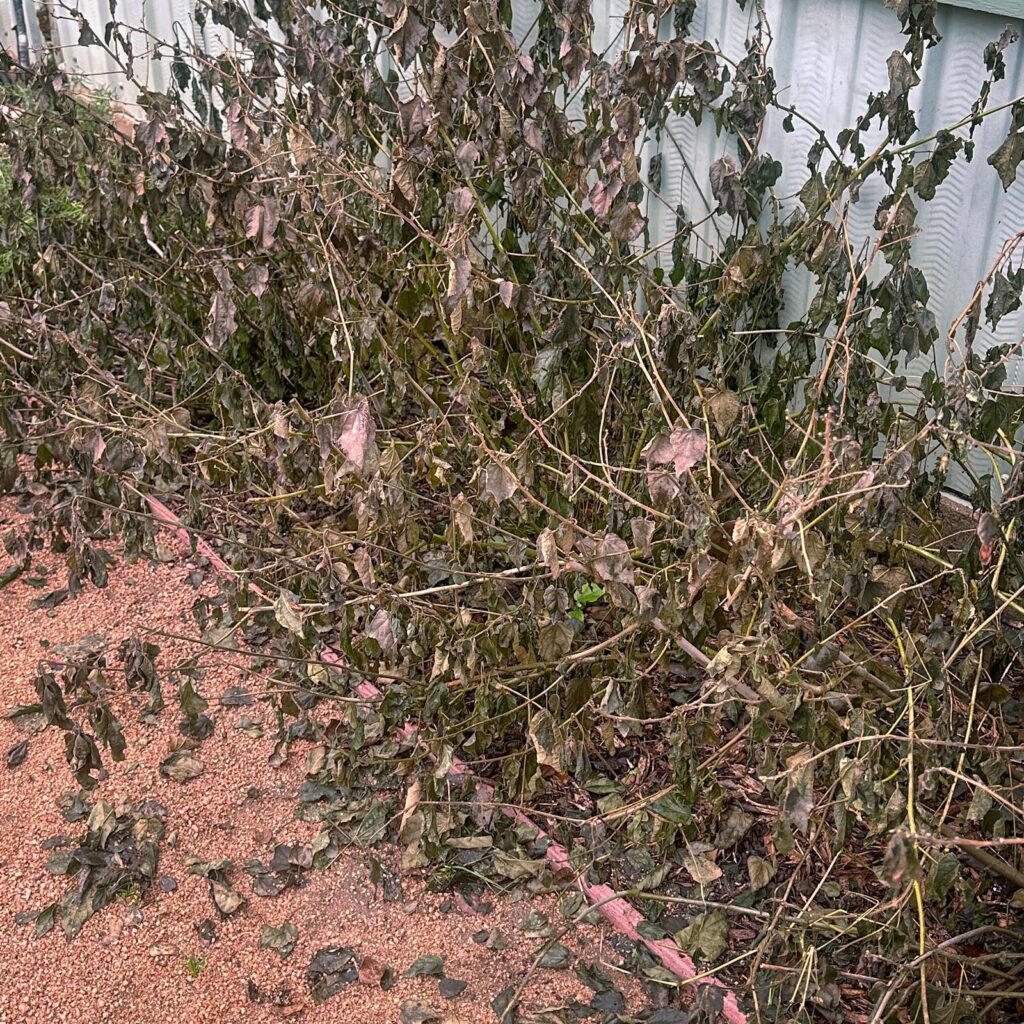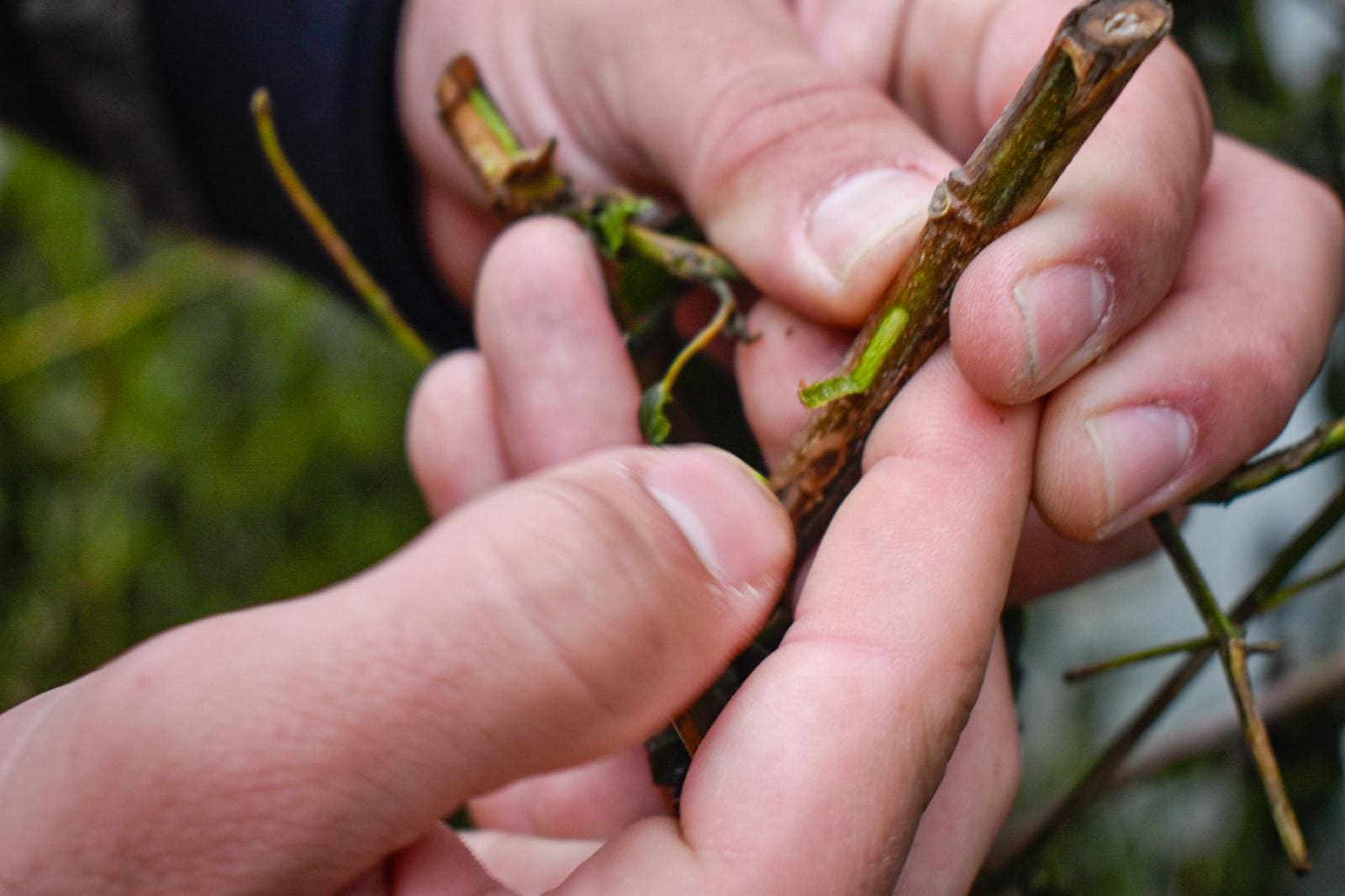The freeze certainly damaged some plants, but chances are a lot of them are still alive and will be just fine, even though they look rough right now. Here are a few tips for assessing damage and moving forward into spring!
The Scratch Test
Use the scratch test for most blooming perennials (like Turk’s Cap, different salvias, and Lantana) and woody plants (like Bougainvillea, Esperanza, and Hibiscus). Using your thumbnail, a dime, or pruners, start at the tips of branches and lightly scratch through just the outer layer of bark. If the cambium layer underneath is brown, keep working your way down the branch. Once you see bright green cambium under the bark, you know the plant is still alive! This also tells you where to prune when the time comes (not yet!). See Harry’s video below for a demonstration.
Don’t Prune Just Yet
Since we still have a chance for more cold weather, your best bet is to wait until mid February to cut back the freeze damaged parts of most plants. The ugly freeze-damaged foliage helps insulate the plant against any additional cold snaps. Plus, pruning signals to the plant that it’s time to start putting on new growth. Since that new growth is the most susceptible to cold damage, you want to wait.

What About “Mushy” Plants?
If you have succulents or plants like Purple Heart or Elephant Ears that turned to mush after the freeze, go ahead and cut away the mushy parts. Leaving those slimy, mushy parts can encourage fungus. When you cut the mush away, you can apply Dusting Sulphur to help seal the wound and prevent fungus. Even a lot of these plants are expected to come back! Time will tell.
Click to Watch – How to do the Scratch Test!



Brian Hart says
Thanks. What about lawns. After all this hours below freezing, my lawn — mostly San Augustine — turned shockingly brown very quickly. Is this to be expected or is something else going on?
Jesse Jenkins says
Hi Brian – most likely nothing to worry about. The freeze pushed lawns into winter dormancy. Expect it to green up again this spring.
Laurie says
Lately I’ve seen many of the white with black spot moths which you indicated are … ??? … can’t think of the word????…bad, foreign, invasive. I’ve killed every one I’ve seen. What damage do they cause? Could they be the cause of holes in the middle of an otherwise healthy plumeria leaf?
I have leaves that were eaten around the edges – but never ones with holes in the middle of a healthy leaf.
Inquiring mind is wanting to know???? Thank you. Laurie Murray
Jesse Jenkins says
Hi Laurie – yes, it could be the caterpillar (or many others) eating holes in your leaves. You can treat with organic BT which only kills caterpillars. Safe for everything else!